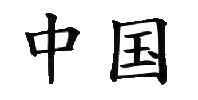China Beat Archive
Date of this Version
8-4-2009
Document Type
Article
Citation
August 4, 2009 in the China Beat http://www.thechinabeat.org/
Abstract
For scholars of China who are interested in modernity, the looming question seems to be, is ‘modernity’ a valid and useful analytical category for describing, explaining, and understanding China? And if so, how should modernity and its attendant conceptual apparatuses be deployed in investigations of China’s various aspects, historical, political, cultural, and so on? In The Cambridge Companion to Modern Chinese Culture, editor Kam Louie and a distinguished list of contributors seek to explore China within its particular modern contexts and clarify the idea of ‘modernity’ by using historical and contemporary cases.
In his introduction Louie writes, “At first glance, the concept of ‘modern’ should not present many problems since it should really be a matter of definition only,” with the standard definition locating the French Revolution or the Industrial Revolution as the benchmark by which to recognize the advent of the modern era (3). Louie rejects this definition as being unrepresentative of changes in Chinese culture; he likewise rejects the rigid schema used to organize Chinese history using the terms jindai (mid-nineteenth-century to the 1919 May Fourth Movement), xiandai (1919 to 1949), and dangdai (the post-1949, i.e. contemporary, period) (3-4).
Instead, Louie proposes 1900 as the beginning of modern Chinese culture, due to the changes heralded as well as influenced by the intense output of works on modernization from famous writers like Liang Qichao and Kang Youwei around that time (5). As this starting point implies, the influence of late Qing culture on China’s emerging modern cultures is taken seriously by the authors featured in this volume. And as Louie points out, this periodicization centers the discussion of modern Chinese culture firmly in the twentieth-century and beyond, into a “new millennium [that] has already witnessed a Chinese culture that was unimaginable only a few generations ago” (6-7).
Included in
Asian History Commons, Asian Studies Commons, Chinese Studies Commons, International Relations Commons



Comments
Copyright August 4, 2009 Miri Kim. Used by permission.